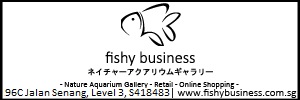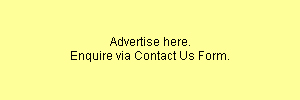
Originally Posted by
Steffen Hellner
Hello,
whenever eggs of S. hellneri will be avilable will be fine for me.
As for the incubation of eggs e.g. nigripinnis. I have developed a mthode based on observations in the natural habitats, and with this I can get the eggs to develop within the natural period. In aquarium they are usually overstored in many cases. To point it out: When water evaporates it produces coldness. Thus when the waters in nature dry up they stay coll for a very long time even when the water level is decreasing. In Simpsonichthys biotopes in 99% the water is turbid by clay and from this blocks the sunrays out which helps keeping the water cool. Only short before completely drying up you still find all species in the pond, if predators (Cynolebias) are present you will find more of them than of the Simpsonichthys (resp. Megalebias and Austrolebias in the south). When the water is gone completely, the sun heats up the ground very quickly and the eggs as well. The natural dry season is usually not longer than 4-8 weeks everywhere in South America. Keep in mind that the beginning of the dry season does not mean the ponds are gone instantly, they will last for another 1-2 months, often longer as many of them are rather deep. So the eggs in the ground are heated up quickly while the ground is drying up. Before this, the ground is kept cold by the evaporation. In aquarium manitenance, I spwan the SAA at moderate temps, then take out the peat container, put it on the floor at about 18 °C for some days or a week, then wrap it in paper and dry and heat it up on the top of a lighted tank. The temperature jump from 18 to 30 or even 35 °C and the peat getting dryer are the triggers for the start of the dry season and incubation. By this I regularly had hatches as following:
Gnatholebias (all): 19 days to 28 days
Simpsonichthys (most, except zonatus, boitonei): 4-6 weeks
Austrolebias nigripinnis: 2-4 weeks
Moema (all): 2 months
Cynolebias: 2-4 months
Neofundulus paraguayensis: 4 weeks
Pterolebias longipinnis, wischmanni: 2 months
Aphyolebias peruensis, rubrocaudatus: 5 months.
If incubations are mentioned like 9-15 months this is obviously utter nonsense as this would lead to an immediate extinction in nature. Of course there can be eggs in diapause for a longer time but I highly doubt this reports of 3 years for A. nigripinnis and others. I tried this with several well spawned bags from which I usually hatched hundreds and after 15 months there was hardly any fry, after 18 months none anymore! The Gnatholebias are said to be difficult. Rubbish! I fed the fry by the hundreds, no joke, as they are as prolific as any other annual, but if these fish from the Llanos (extremely hot dry season) are incubated at room temperature the eggs will dye off rather than develop. I had week spawns from 5 pairs with 400+ fry over months. Handed them out, fed the overhead and told how it will work. Nobody followed my advice, now these fish are gone or are only reintroduced once again and again instead of working them as their nature requires. Guess why S. fulminantis is so widespread in the hobby? It is a cold fish, I collected it at 7.00 hrs. in the morning in water of 17 °C at the surface. The pond is about 150 cm deep! So at the bottom there it has only 15 °C or less. Your feet will feel very cold there.;-) And it is from acid waters. Perfect conditions for a small Aphyosemion. The pond hardly ever dries up, you will find all sizes of fulminantis and C. leptocephalus. And oodles of fulminantis. Incubation for fulminantis: 2-4 weeks - maximum....
?
Best,
Steffen
But they are definitely clear and healthy and have been kept as cool as is reasonable here. So will see how it goes.















 Reply With Quote
Reply With Quote


Bookmarks